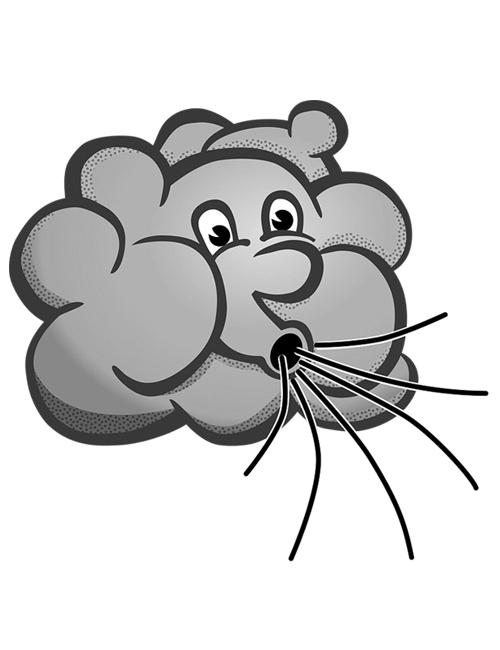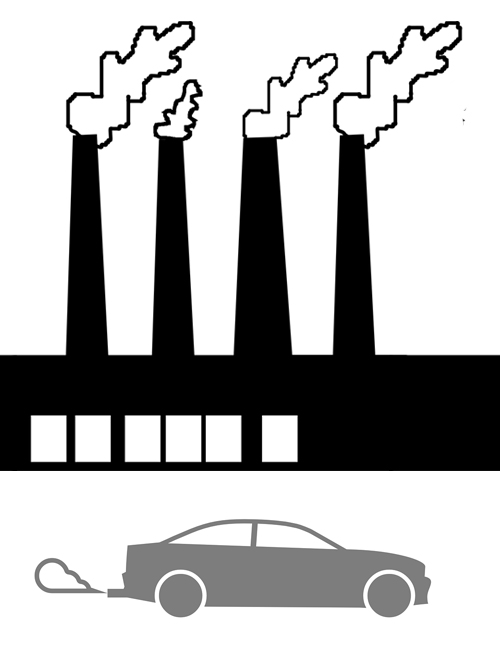
- Air is essential for the survival of all human beings and other living organisms such as animals, plants, and micro-organisms.
- Air consists of a mixture of various gases such as nitrogen, oxygen, argon, carbon dioxide in different proportions.
- It consists of 78% nitrogen, 21% oxygen, and 1% of gases such as carbon dioxide, ammonia, methane, hydrogen, ozone, and other gases such as argon, neon, helium, krypton, xenon, and radon.
- The layer of air above the earth’s surface is called atmosphere. The atmosphere is divided into five zones: troposphere, stratosphere, mesosphere, ionosphere and exosphere.
- The air that we breathe is present in the first zone of earth known as troposphere. It is 10 to 12 km from the surface of the earth.
- The zone above troposphere is called the stratosphere. It is rich in ozone gas, which forms the ozone layer.
- Oxygen and ozone of stratosphere protect us from the ill-effects of ultraviolet light rays of sunlight.
- Human beings and other living organisms depend on air for their survival. Oxygen helps to create energy for plants and animals. Body cells take up oxygen from blood and generate energy from food.
- Flow of air at high speed is called wind, and wind is used to generate power by installation of wind turbines.
- Air is a good conductor of sound, we can hear speech or music or noise in the presence of air.
- Air plays an important role in the water cycle as water gets evaporated from soil, oceans etc due to Sun’s heat and form clouds. The clouds get cooled by air and then these clouds shower as rains. So rainfall depends on the current of the air (wind).
- Just like bees, air also supports pollination, as pollens get blown away by air from plants, cross pollination takes place.

- Air gets polluted due to presence of pollutants in the atmosphere and it can result from both human and natural occurrences.
- Major air pollutants include carbon dioxide, nitrogen oxide, sulphur dioxide, etc.
- Pollution from natural occurrences such as forest fires, volcanic eruptions, wind erosion, pollen dispersal, evaporation of organic compounds and natural radioactivity cause air pollution.
- Emissions from industries, power plants, and manufacturing activities release high levels of carbon monoxide, organic compounds, and chemicals into the air.
- The combustion of fossil fuels like coal, petroleum and other factory combustibles is a major cause of air pollution. Mode of transportation such as cars, ships, airplanes and electrical appliance such as television, air conditioners, and lights- burn a lot fuels, and pollute the air.
- Use of pesticides, fertilisers pollute the air by releasing harmful chemicals into it.
- Deforestation and agricultural activities are responsible for emission of greenhouse gases into the air. Trees clean the air by storing carbon dioxide, but due to heavy deforestation air pollution is on the rise.
- Landfills generate methane gas, which is another major greenhouse gas.
- Burning of discarded plastic, wood and rubber also release harmful gases and pollutes the air.
- Air pollution causes a variety of environmental effects such as acid rain, eutrophication, ozone depletion, damage to crops and forests, and climate change.
- Air pollution causes many health issues such as irritation of the eyes, nose, and throat, wheezing, coughing, chest tightness, and breathing difficulties.
- Just like humans, animals can experience health problems due to air pollution. Air pollution can cause disease, birth defects, and reproductive failure in animals. It also poses a serious threat for the aquatic and terrestrial ecosystems.
- Acid rains occur when air gets polluted with sulphur dioxide and nitrogen oxide. Then they mix with water particles in the air to form a toxic substance. Acid rains lead to increased growth of algae, which leads to eutrophication.
- Eutrophication leads to blocking of sunlight from entering water bodies and reduces oxygen values in water, which creates an inhabitable environment.
- Air pollution caused by various human and industrial activity have led to considerable reduction in the ozone layer of the atmosphere. Ozone layer absorbs the the harmful ultraviolet radiations emitted by the sun.


 Biodiversity
Biodiversity